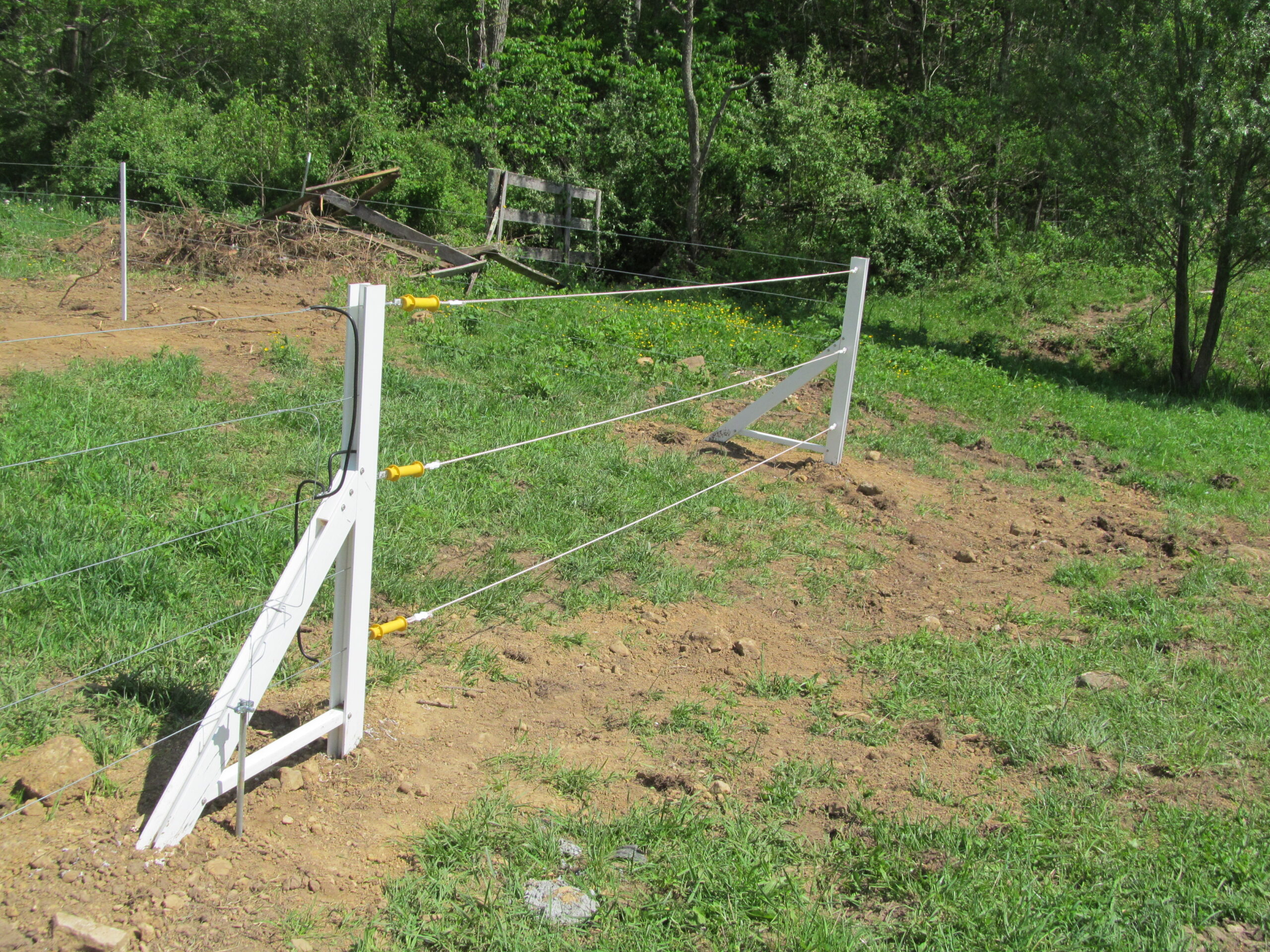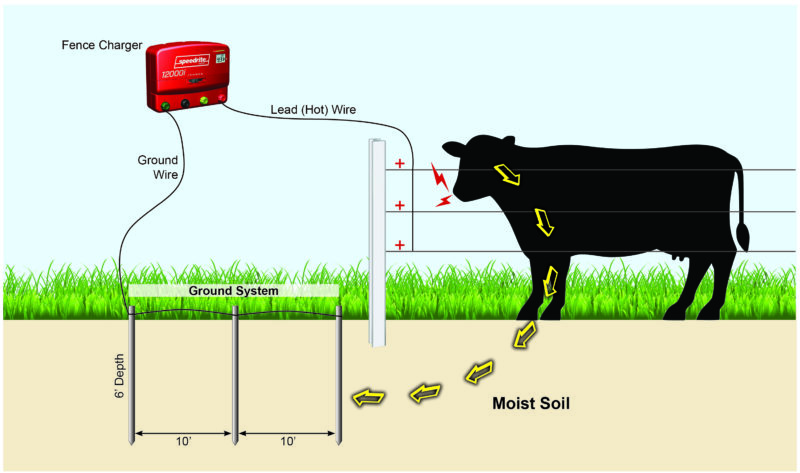
23 Jun Ground My Electric Fence?
Ground My Electric Fence?
I Thought That Was a Bad Thing!
Some folks use the term “grounded out” when their electric fence has gotten foliage on it and has reduced their electrical current. This is not a good thing. But we are actually talking about grounding your fence so that you have the proper current flow.
Grounding is a critical part of an electric fence system and should be done properly to ensure its effectiveness. The quality of the grounding system can greatly influence the overall performance of your fence.

Recommended procedures for grounding an electric fence
Choose the Right Grounding Rods
Use galvanized rods that are at least 6-8 feet long and 1/2 to 3/4 inch in diameter. The rods should be galvanized to prevent them from rusting. The longer the rod, the better, because it increases the chance of reaching moist soil.
Placement
Grounding rods should be placed 10 feet apart from each other. They should be driven into the ground until they are flush or nearly flush with the surface. If your soil is very dry or sandy, you may need additional rods.
Connection
Use heavy-duty, insulated wire, or 12.5 gauge high-tensile wire to connect the rods together. The wire should be attached to the rods consecutively, not piecing the wire, with a ground rod clamp.
Link to the Energizer
The first rod in your ground system should be connected to the ground terminal on your fence energizer.
Soil Type
The type of soil you have will greatly affect the effectiveness of your grounding system. Moist, loamy soils conduct electricity much better than dry, sandy soils. If you live in a dry region, you may need to use more ground rods, or consider a “ground return” system where the animal must touch a ground wire and a hot wire to feel a shock.
Check for Voltage
Use a fence voltage tester to measure the voltage on the fence. If it’s lower than expected, your ground system may be inadequate.
To make sure your grounding is effective, here are a few additional tips:
Check for Proper Installation
Ensure that all components of the fence, including the grounding system, are installed correctly. The grounding rods should be deep enough in the ground, and there should be a good connection between the rods, the wires, and the energizer.
Regular Testing
Regularly check the voltage on your fence with a voltage tester. A low voltage could indicate a problem with the grounding system or with the energizer.
Consider Soil Moisture
If you live in a dry region, consider using a ground return system or adding more ground rods.
Maintenance
Regularly check and maintain all components of your fence system. This includes checking for broken wires, corroded connections, or damaged insulators.
Knowledgeable Assistance
If you’re unsure about the effectiveness of your grounding system, give us a call here at Timeless Fence. Our Sales Reps can help you troubleshoot problems and ensure that your fence is working as effectively as possible.


